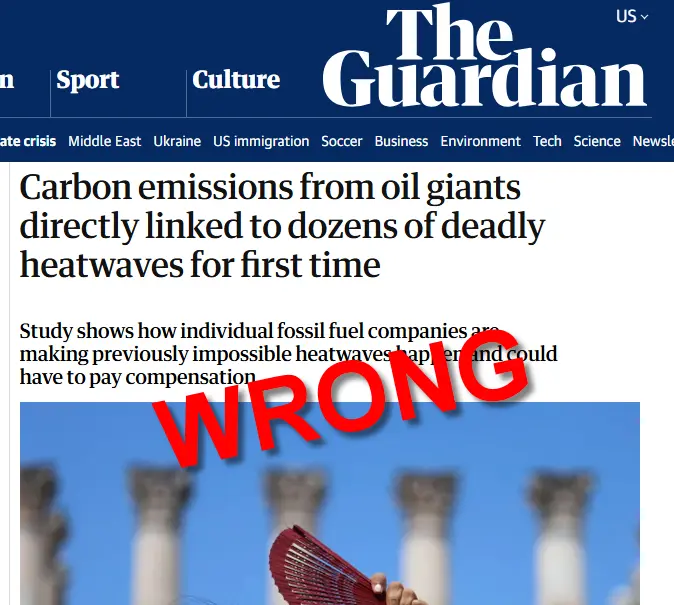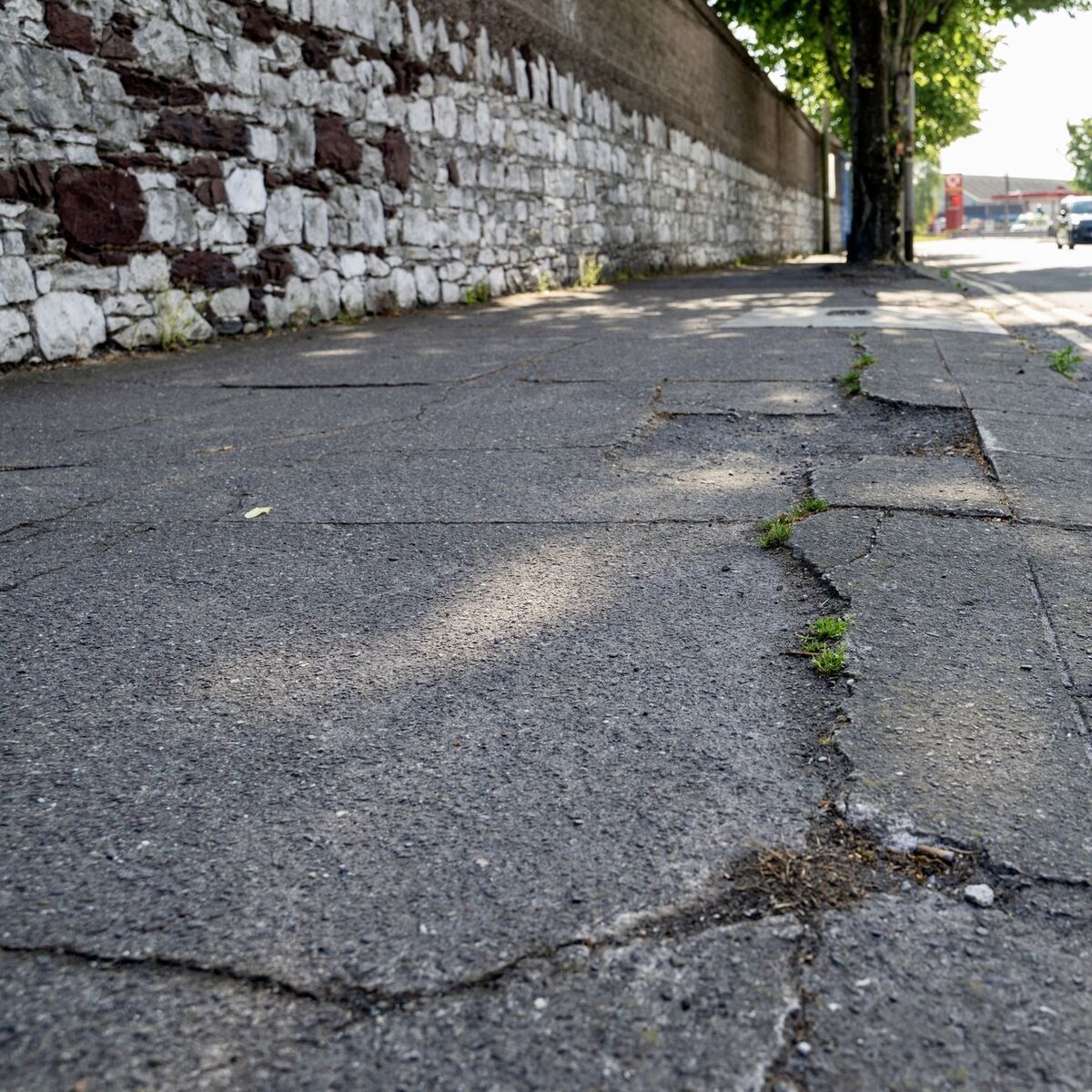
In The Guardian’s article, “Carbon emissions from oil giants directly linked to dozens of deadly heatwaves for first time,” Damian Carrington reports on a study claiming that the carbon dioxide (CO2) emissions from just 14 major fossil fuel companies were enough to cause more than 50 heatwaves that “would otherwise have been virtually impossible.” This is false. heatwaves were far worse in the past than today and it is impossible to link any particular heatwave to emissions from any company or group of companies, since data show no causal connection between emissions and changes in heat waves, at all.
The piece frames the research they reference as a legal turning point, arguing that oil producers could now face liability for specific extreme weather events. The article quotes researchers as stating that “the emissions from any one of the 14 biggest companies were by themselves enough to cause more than 50 heatwaves that would otherwise have been virtually impossible.” It goes further, citing campaigners who assert: “We can now point to specific heatwaves and say, ‘Saudi Aramco did this. ExxonMobil did this.’”
The claim that “global heating is making heatwaves more frequent and more intense across the globe” ignores historical records, runs contrary to peer-reviewed evidence, and lacks any evidence of a causal connection in data.
Studies published in peer reviewed journals like the Journal of Applied Meteorology and Climatology show that U.S. heatwave frequency peaked in the 1930s Dust Bowl era, long before modern emissions rose dramatically. The National Oceanic and Atmospheric Administration’s U.S. Climate Extremes Index confirms that while recent decades have seen notable heatwaves events, there is no clear, consistent upward trend surpassing the 1930s. This graph, shown below, using that data and published by the U.S Environmental Protection Agency, discussed in Climate at a Glance: U.S. Heat Waves, underscores just how unsupportable the claim made by The Guardian is:
There is no upward or worsening trend in heatwaves in recent decades. Nor is there a trend of heatwaves that tracks the rise in greenhouse gas emissions, much less a trend linked to greenhouse gas emissions from particular oil companies or the industry as a whole.
The attempt to pin specific weather disasters on particular companies stretches science far beyond its limits. Even the Intergovernmental Panel on Climate Change (IPCC) AR6 report acknowledges that while attribution science can estimate probabilities, many categories of extreme weather, including droughts and tropical cyclones, cannot yet be definitively linked to incremental global warming. The IPCC itself warns that uncertainties remain high, particularly when applying global climate models to regional, short-term events. If the leading authority on climate science admits the limitations, it is implausible that a handful of researchers can leap directly from model outputs to courtroom-ready claims of individualized corporate culpability.
Attribution studies rely heavily on counterfactual scenarios produced by computer models rather than actual observed and measured climatic changes. The Guardian itself admits the method compares today’s world to a “world before mass burning of fossil fuels” by simulating what the world might have looked like absent industrial emissions. This counterfactual world is not observable—it is generated inside computer climate models that remain riddled with uncertainties about clouds, aerosols, and ocean cycles, and the biases of the modelers whose assumptions about how the climate responds rising greenhouse gas emissions are built into the models. Linking ExxonMobil or Saudi Aramco to a single heatwave is pure speculation dressed up in scientific language, but it has no basis in fact. It is nothing more than science fiction, dressed up as scientific fact in furtherance of a political/lawfare objective.
Even legal scholars cited in the article concede that the road to liability is “littered with legal and evidentiary potholes.” Those potholes exist for good reason: because weather is influenced by countless factors including natural climate oscillations like the Pacific Decadal Oscillation and El Niño–Southern Oscillation. The study referenced by The Guardian tried to assign corporate responsibility for a specific 2021 Pacific Northwest heatwave which has been thoroughly debunked in the Climate Realism article: Expert Analysis: ‘Climate Change’ Had No Significant Role in Pacific Northwest Heatwave. The claims made in the study ignore the long history of extreme events in that very region, such as the record-setting 1941 heatwave, which occurred when the Earth was cooler and when CO2 concentrations and emissions were lower.
Even if, contrary to the evidence, CO2 emissions could be linked to a trend in worsening heatwaves, which they can’t since no such trend exists, it is not the oil companies that are producing the emissions, but rather the governments, industries, companies, and people using fossil fuels to power modern society that are actually producing the emissions. Emissions are the result of our individual and collective choices in the modes of transportation and products we use, and the way we generate electricity, not oil companies making fossil fuels available for such uses.
By highlighting the assertions made in this false attribution study, The Guardian abandoned journalism in favor of activism. Instead of soberly reporting the limits of attribution science, it stages a morality play where oil companies become convenient villains and every heatwave a courtroom exhibit. This isn’t science—it’s propaganda masquerading as news. Readers who should be able to expect their media outlets to inform them by discussing evidence and revealing hidden truths, got theatrics instead from The Guardian, which, with some regularity, produces baseless alarmism in furtherance of a scary narrative for political ends when the facts don’t cooperate.



